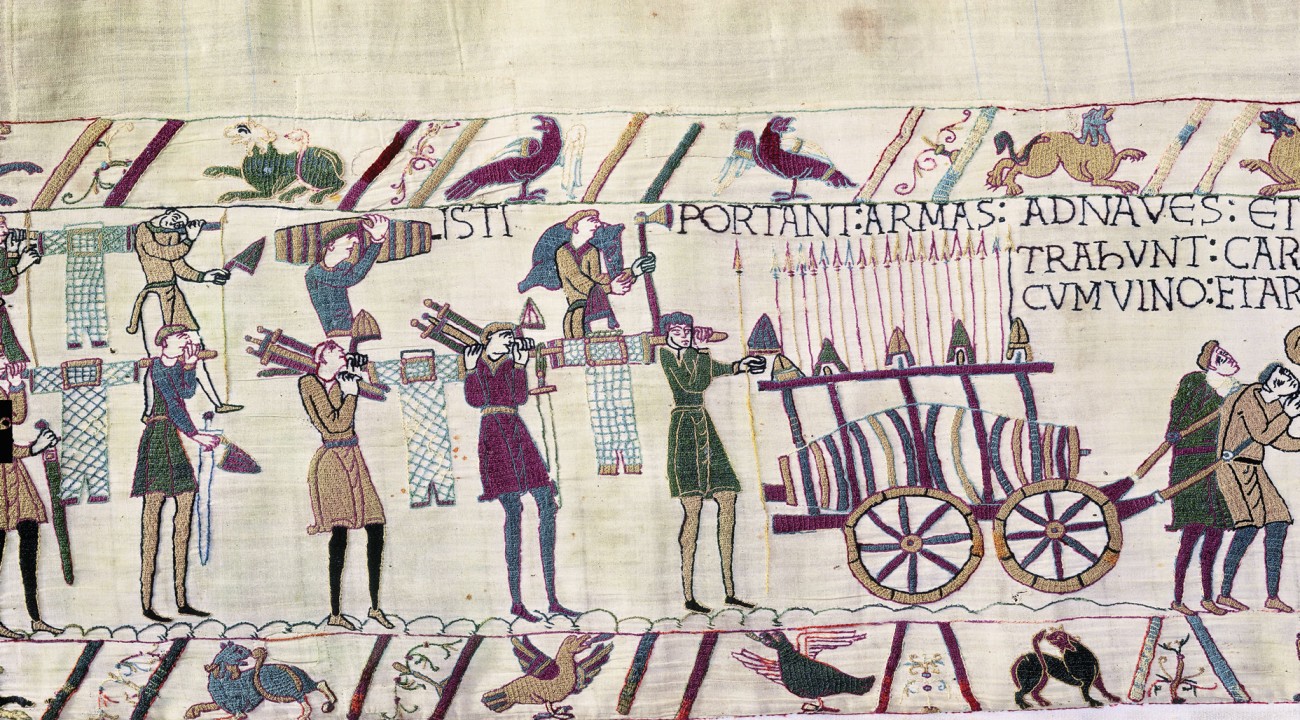
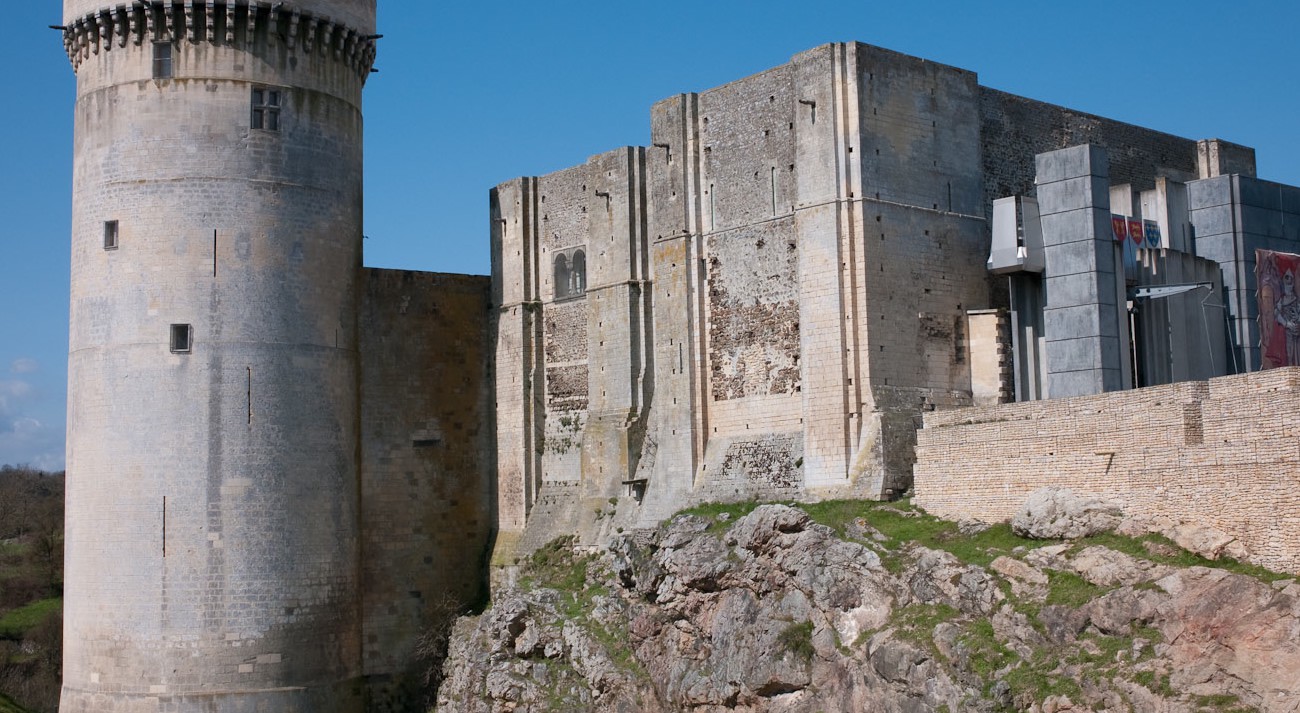
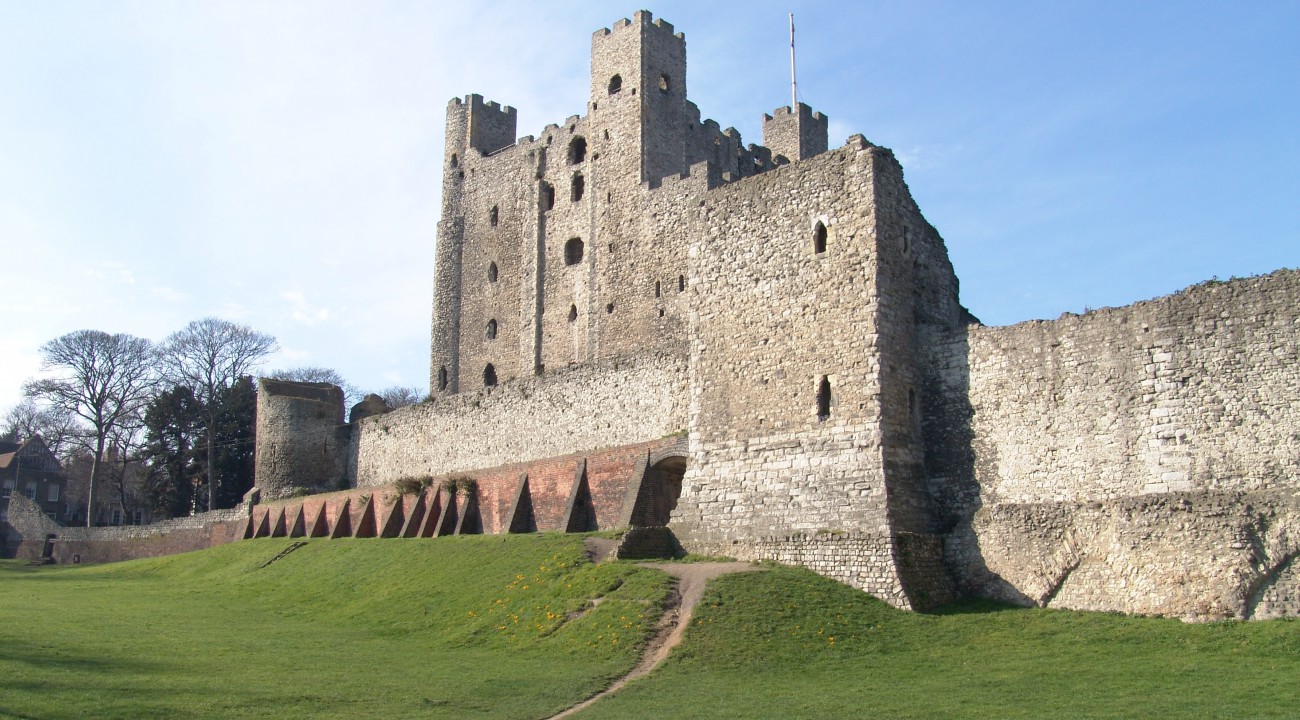
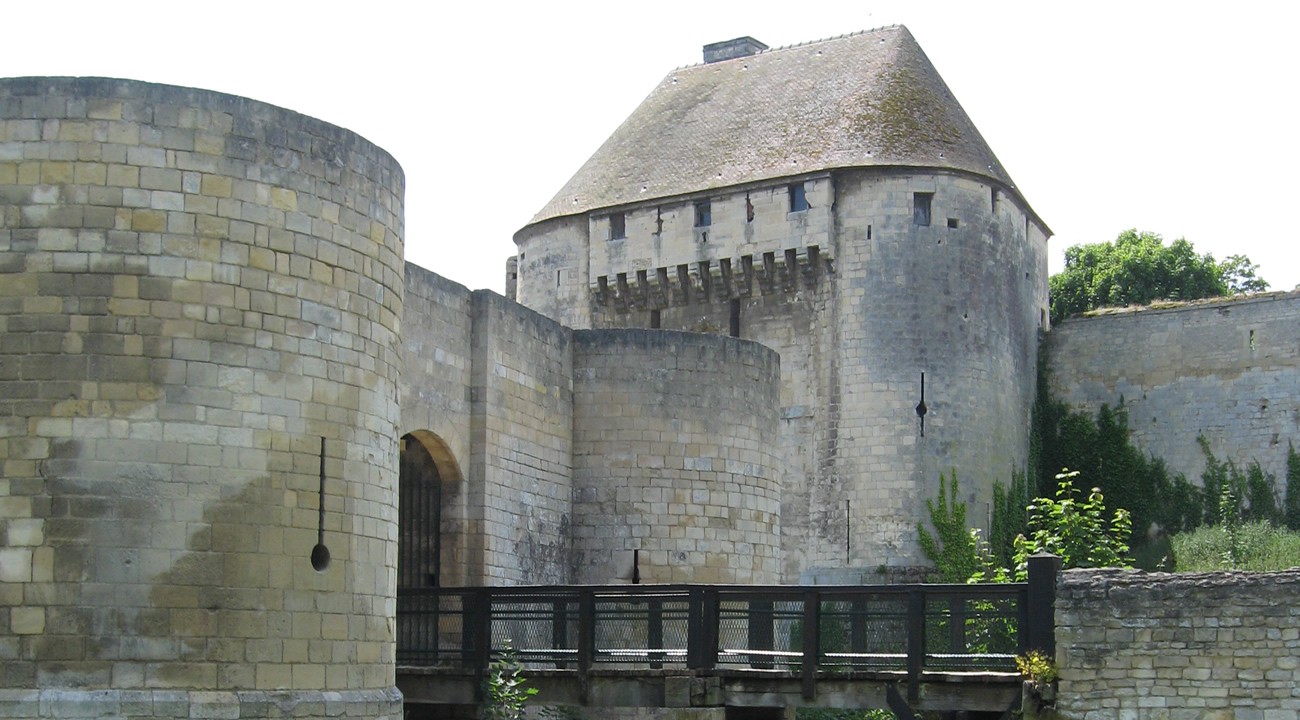
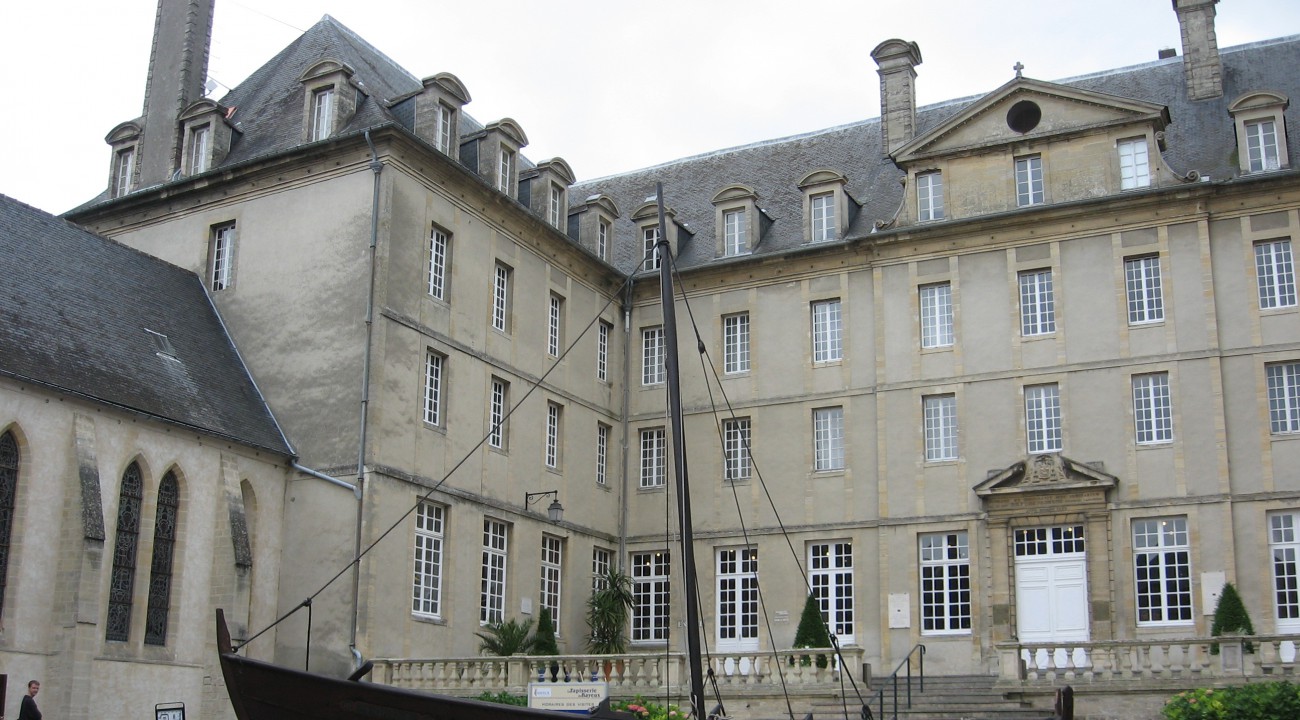
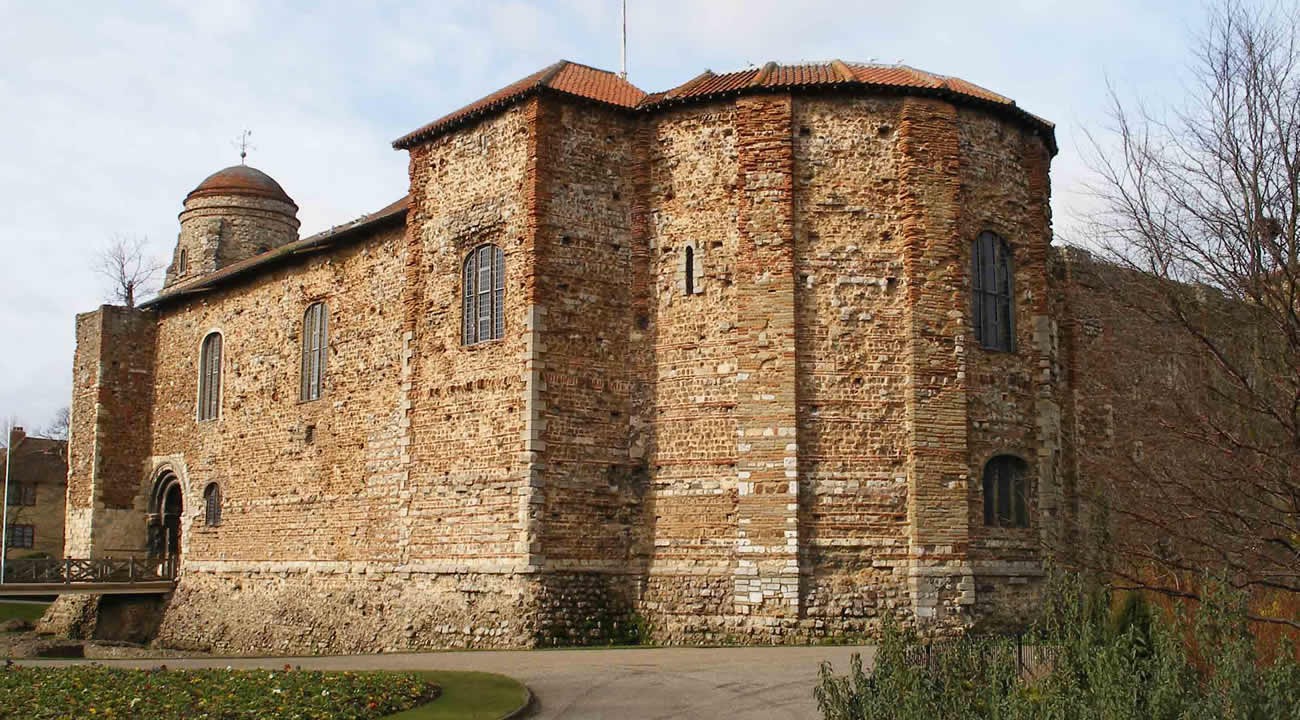
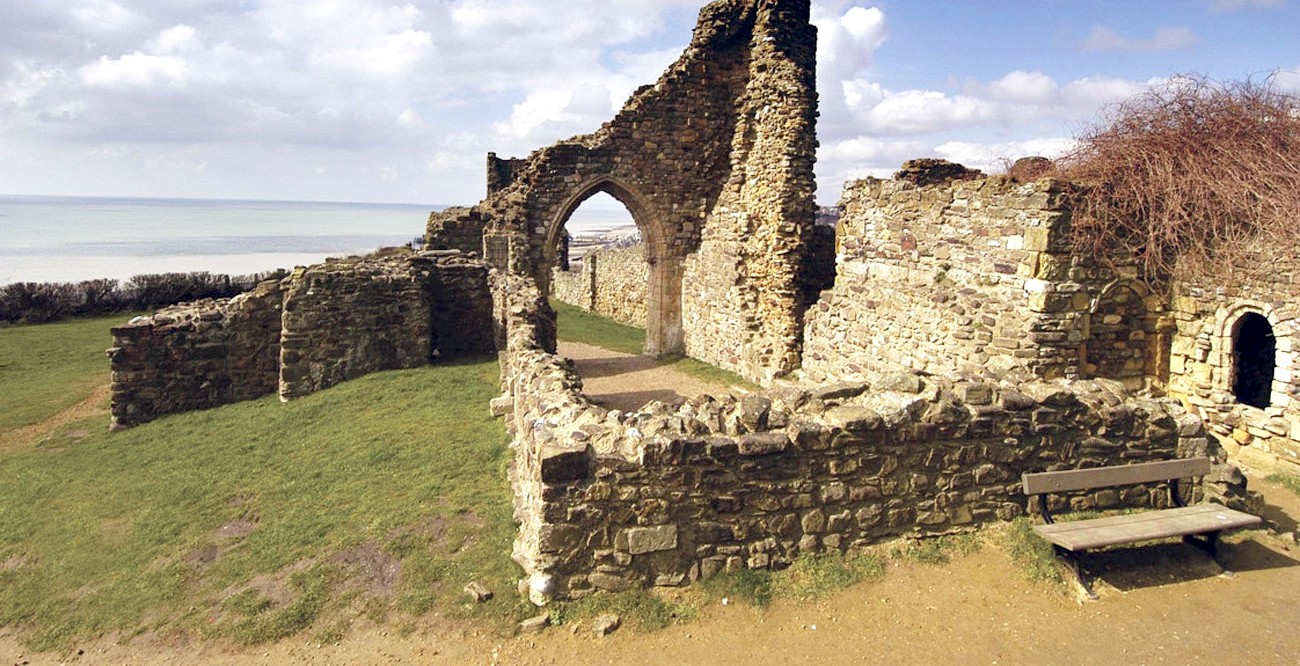
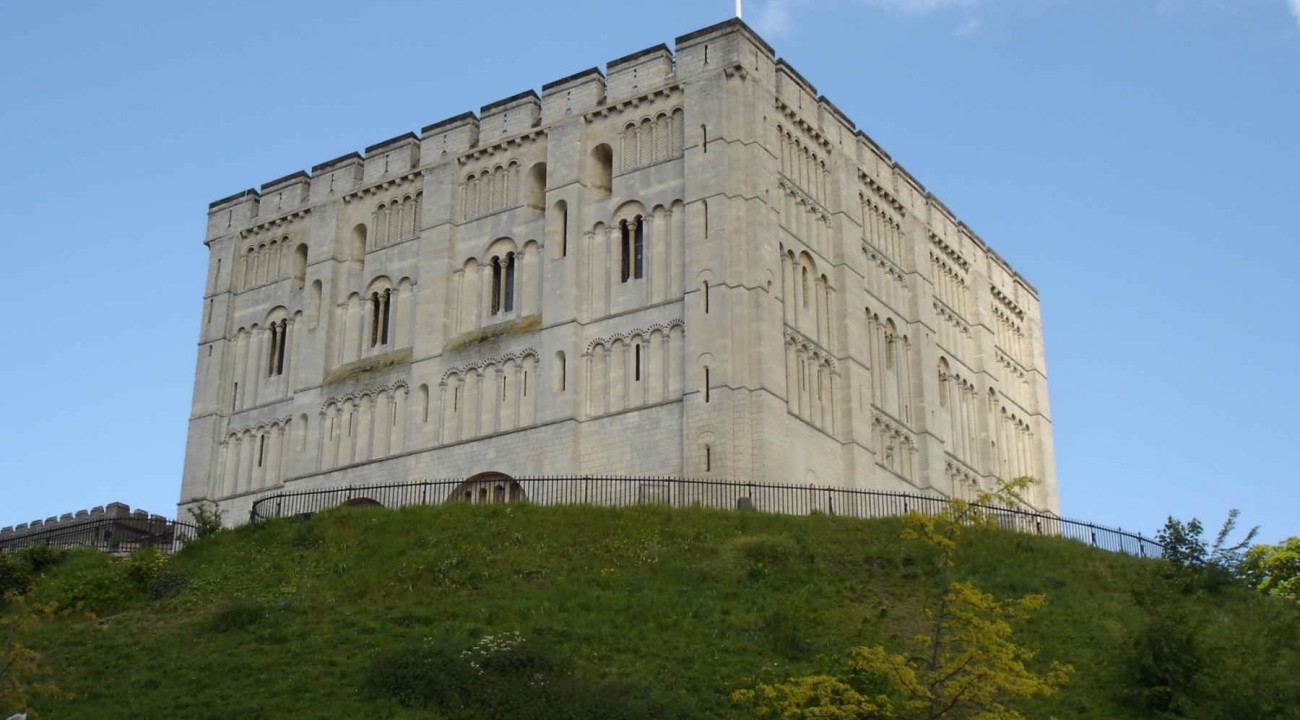
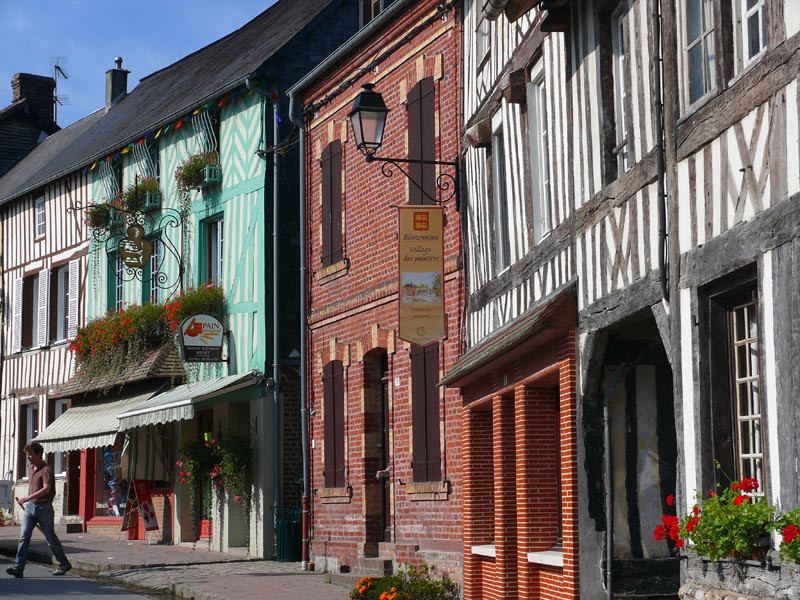
- Introduction
- Timeline
- Gallery
- Historical Background
- Site Plans
- 3D Reconstruction
Hastings Castle was built on a promontory over the town, a site which had been fortified in the Iron Age. It is protected by tall sea-cliffs and a rock-cut ditch. A defensive enclosure, known as the Ladies’ Parlour, occupies the whole promontory on the West Hill, and one half of the original area was taken over by the Norman Castle.
Within this defended area, William Duke of Normandy built a motte and bailey castle immediately after landing with his army in 1066. Some sources claim that the original wooden structure was carried over from Normandy in pre-fabricated form as part of the Norman supplies. William issued orders for the castle to be rebuilt in stone in 1070. The original motte lies buries within a later enlargement on which stood a stone keep after 1172.
The Counts of Eu held Hastings Castle for most of the early Norman period, and it was Robert who established a college of ten canons in the Chapel of St Mary. This collegiate church supported both a choir school and a grammar school. Thomas Beckett was appointed Dean in 1154, but there is no record that he ever visited Hastings.
The Castle passed into the hands of the Crown in the mid-12th century. In 1201 King John stayed at the castle and from there promulgated his Ordinances as to the Sovereignty of the Seas. All vessels on meeting the Lieutenant of the King, or his Admiral had to ‘stryke and vail their bonnets’, that is to strike and lower their topsails in salute. If they failed in this courtesy they would be regarded as enemies. In 1216 King John ordered the Castle to be ‘slighted’ to stop it falling into the hands of the Dauphin Louis.
Henry III re-fortified the castle in c1220, and it flourished until fate took a hand in 1287. Violent storms battered the South coast and eventually a large face of the soft sandstone cliffs crumbled into the sea taking a large part of Hastings Castle with it. Many traditional coastal ports were abandoned as the coastline changed and harbours silted up. Hastings too suffered this same fate and the town began a period of decline.
Hastings was attacked and badly damaged in 1339 and again in 1377 during the Hundred Years War. Throughout the next couple of centuries more of the Castle fell into the sea as the cliff eroded. In the mid 16th century the Dissolution of the Monasteries by Henry VIII saw the closure of the Collegiate Church and the site was left to decay. The land passed to the Pelham family and was used for farming for many years, as the ruins became so overgrown that they were lost from popular memory.
In the early 1820s the cliff face was cut away to build Pelham Crescent and the Church of St Mary-in-the-Castle. In 1824 the remains were ‘rediscovered’ and partially excavated. Finds included several coffins and well-preserved remains within a surviving vault. Repairs to the structure were carried out, a section of the north wall and a church archway rebuilt, and the site became a tourist attraction for the Victorians.
Hastings was a target during the Second World War, with bombing raids causing further destruction to the town and the castle. In 1951 the Hastings Corporation purchased the site and consolidated it to become the historical attraction that remains today.
The European Union, investing in your future

 Fonds Européen De Développement Régional
Fonds Européen De Développement RégionalL’Union Européenne investit dans votre avenir
INTERREG IV A France (Channel) – England, co-funded by the ERDF.








 Email a friend
Email a friend  Print this page
Print this page 